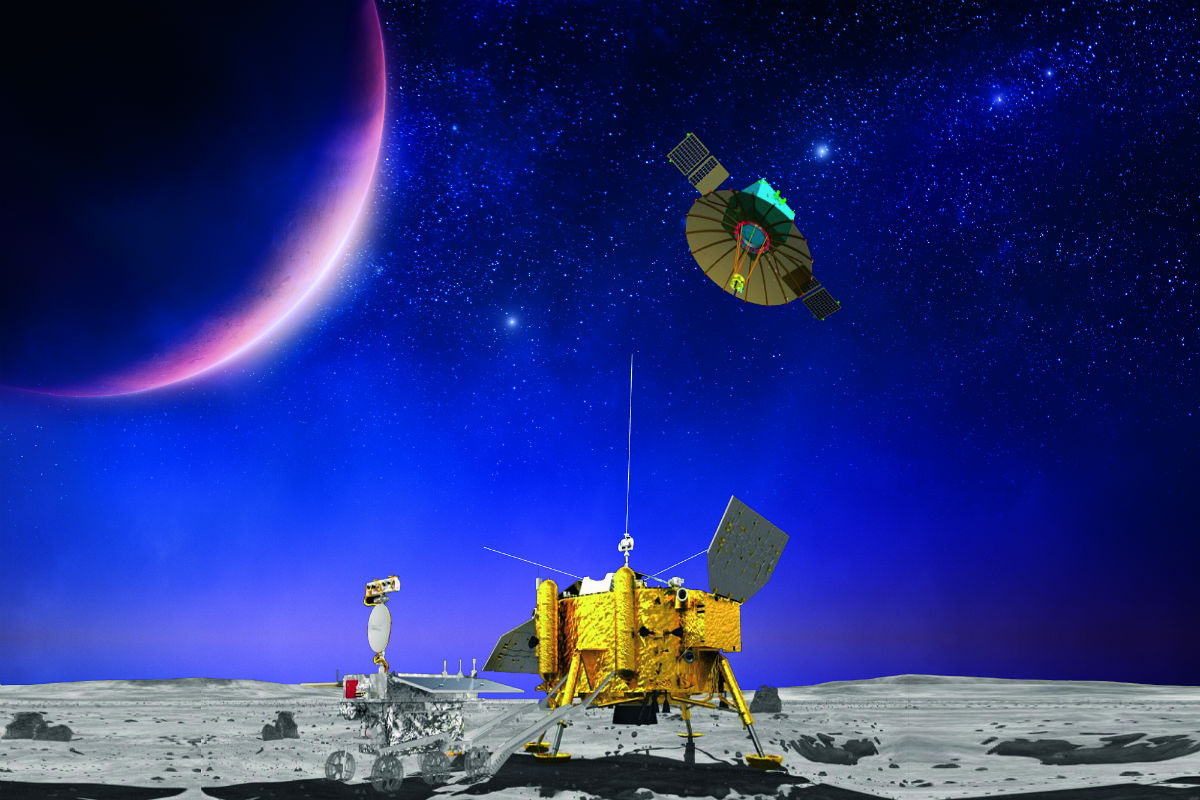Functional Diagram of the Chang’e-4 Lander, Yutu-2 Lunar Rover and Queqiao Relay Satellite

Chang'e-4 Mission
The Chang’e-4 mission includes a lander, the Yutu-2 lunar rover and the Queqiao relay satellite.
The Chang’e-4 lander and Yutu-2 lunar rover are collectively called Chang’e-4 probe. The probe flew about 400,000 kilometers and took 690 seconds to land on the moon.
Chinese scientists designed the probe to work during the moon’s daytime and sleep at night. Like Earth, the moon also spins and has day and night. But a single day on the moon lasts the equivalent of 29.5 Earth days.
Yutu-2 Rover
Driven by six wheels, Yutu-2 can rumble over a 20-centimeter-high stone at a top speed of 200 meters per hour. It was designed to operate for at least three months. The lunar rover is totally homegrown.
In order to adapt to the harsh conditions and sharp temperature differences on the moon, Yutu-2 was specially designed for mobility security, energy supply and science exploration as well as its telemetry tele-control and communication system.
Queqiao Relay Satellite
Queqiao carries an umbrella-shaped antenna with a diameter of 4.2 meters, the largest communication antenna ever used in deep space exploration.
Queqiao operates at the halo orbit around the L2 point. In celestial mechanics, the Lagrangian points are the points near two large bodies in orbit where a smaller object will maintain its position relative to the large orbiting bodies. The first three of these points were derived by the Swiss mathematician Euler in 1767. French mathematician Lagrange proved two more in 1772.
International Cooperation
The success of the Chang’e-4 mission can be attributed to efforts from many countries. Alongside payloads from Germany and Sweden on the probe, the Queqiao relay satellite was equipped with a Dutch low-frequency radio detector, and the isotope heat source jointly made by China and Russia can guarantee Chang’e-4 survives the cold nights. A deep space exploration station built by China in South America participated in the measurement and control task. In June 2018, the miniature imaging camera from Saudi Arabia on the Longjiang-2, a microsatellite developed by Harbin Institute of Technology in northeastern China’s Heilongjiang Province, sent back many photos of the moon and Earth. Since the second half of 2018, NASA and China National Space Administration have negotiated several times on cooperative moon and deep space exploration.